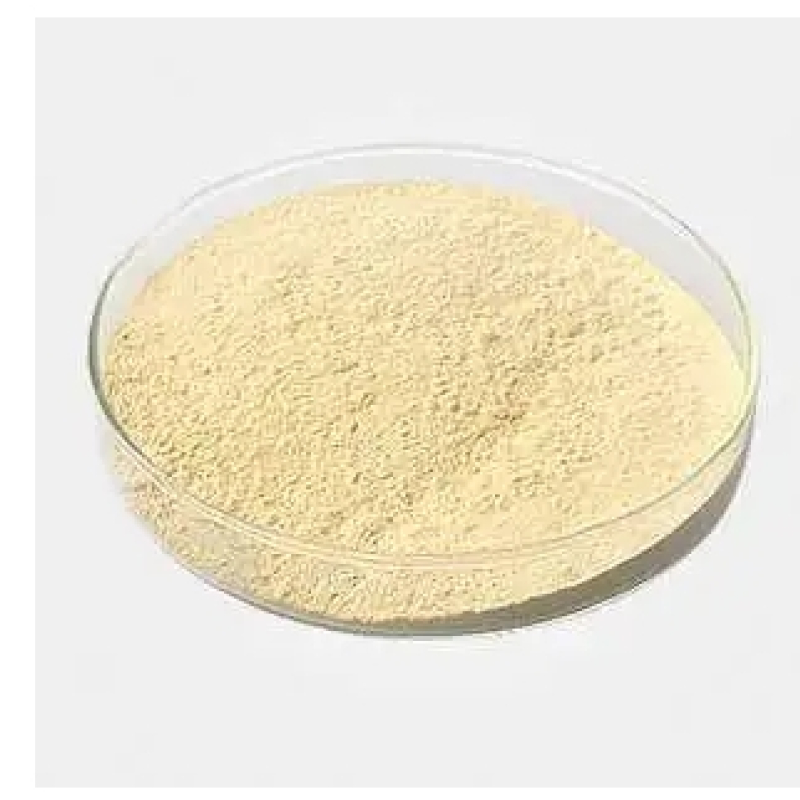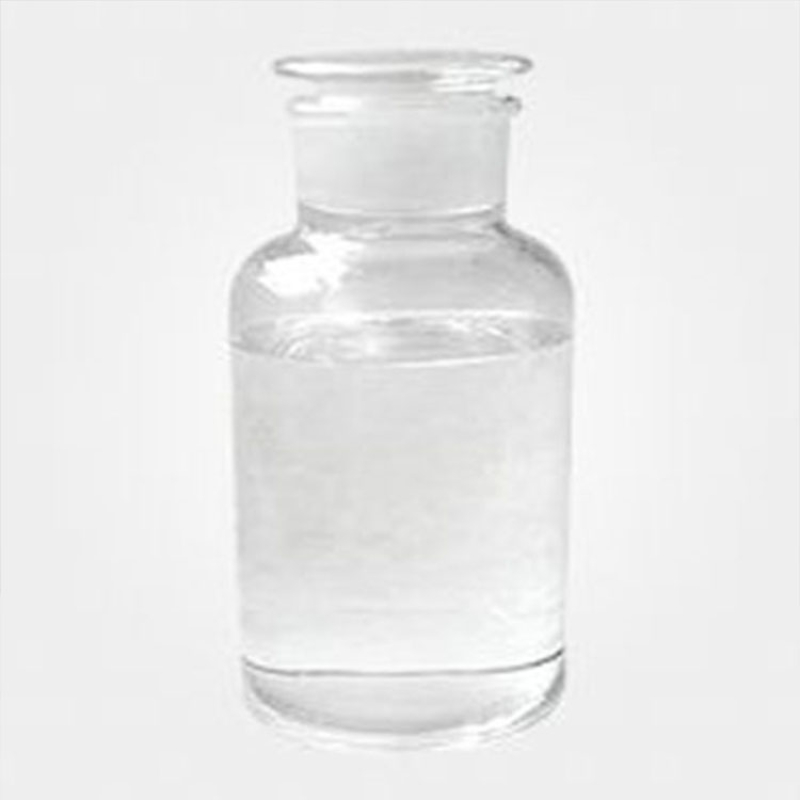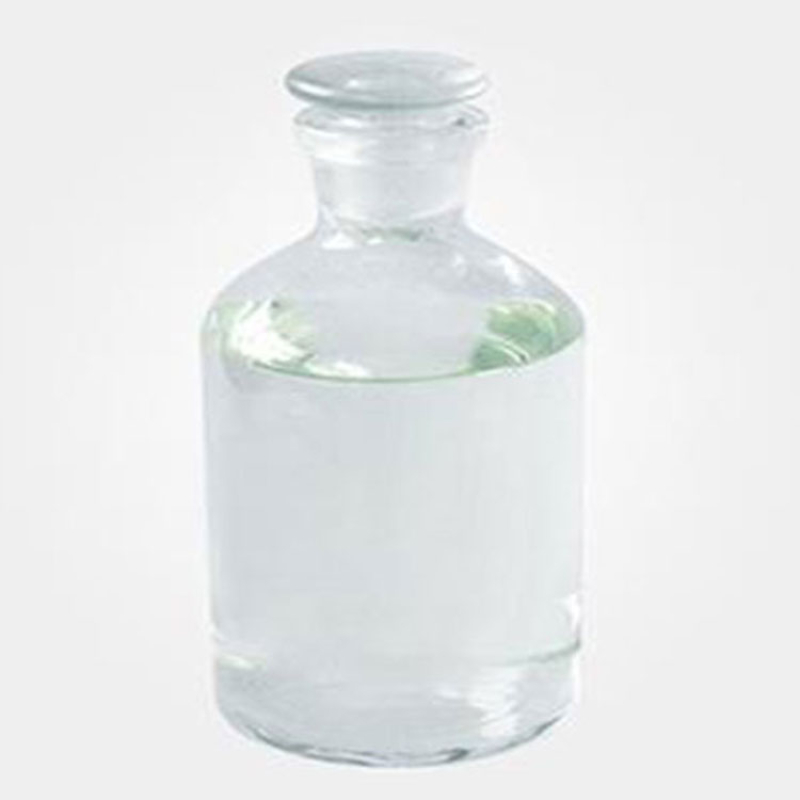Products Description of 6-bromo-1,2,3,4-tetrahydroisoquinoline CAS#226942-29-66-bromo-1,2,3,4-tetrahydroisoquinoline is a solid chemical with a CAS number of 226942-29-6. 6-bromo-1,2,3,4-tetrahydroisoquinoline Chemical PropertiesBoiling point 283℃density 1.428Fp 125℃storage temp. under inert gas (nitrogen or Argon) at 2–8 °Cpka9.26±0.20(Predicted)form SolidCAS DataBase Reference226942-29-6Product Application of 6-bromo-1,2,3,4-tetrahydroisoquinoline CAS#226942-29-66-Bromo-1,2,3,4-tetrahydroisoquinoline is only used for scientific research.Fact
Contact Now
Products Description of Glyphosate CAS#1071-83-6Glyphosate is an organophosphorus herbicide, a highly effective, low-toxic, broad-spectrum herbicide with systemic conduction. This product dissolves the wax layer on the surface of the leaves, branches and stems of weeds, and the drug effect quickly enters the plant conduction system to produce effects, causing the weeds to wither and die. It can effectively control annual and biennial grasses, sedges and broad-leaved weeds, and has a good control effect on perennial weeds with bad habits such as thatch, cyperus and bermudagrass.
Contact Now
Tolyltriazole CAS#29385-43-1Tolyltriazole is a water-stabilizing chemical that inhibits corrosion by bonding to metal parts and machinery surfaces to prevent water from destabilizing the molecular structure of the metal. It creates an electrochemical barrier that is thick enough to deter corrosive chemicals. This barrier is very durable and features favorable oxidative and thermal stability. The long-term protective barrier created by tolyl triazole does not contaminate process fluids or the metal material of piping systems.
Contact Now
Products Description of Monoethanolamine CAS#141-43-52-Hydroxyethylamine, also known as ethanolamine, is an organic compound with the chemical formula C2H7NO.Monoethanolamine Chemical PropertiesMelting point 10-11 °C(lit.)Boiling point 170 °C(lit.)density 1.012 g/mL at 25 °C(lit.)vapor density 2.1 (vs air)vapor pressure 0.2 mm Hg ( 20 °C)refractive index n20/D 1.454(lit.)Fp 200 °Fstorage temp. Store at +15°C to +25°C.solubility Soluble in benzene, ether, carbon tetrachloride.pka9.5(at 25℃)form Liquidcolor
Contact Now
Products Description of Prussian Blue CAS#14038-43-8Prussian Blue, also known as Berlin Blue, Gong Blue, Iron Blue, Milori Blue, Chinese Blue, Milori Blue, Hualan. It is an ancient blue dye that can be used for glazing and oil painting dyes. Prussian blue brings us a breathtaking beauty. It is not only a unique color, but also reflects a precipitated texture.Prussian blue is a blue dye discovered in 1706. Its structure is composed of Fe (II) and Fe (III) coordinated with cyano (-CN-).
Contact Now
Products Description of 2-Methoxy-5-formylpyrimidine is a pyrimidine derivative2-Methoxy-5-formylpyrimidine is a pyrimidine derivative2-METHOXY-PYRIMIDINE-5-CARBALDEHYDE Chemical PropertiesMelting point 94-96 °CBoiling point 281.3±32.0 °C(Predicted)density 1.238±0.06 g/cm3(Predicted)storage temp. under inert gas (nitrogen or Argon) at 2-8°Cform solidpka-0.41±0.22(Predicted)color YellowSafety InformationHazard Codes Xi,XnRisk Statements 22HazardClass IRRITANTHS Code 2933599590Product Application of 2-Methoxy-5-formylpyrimidine is a pyr
Contact Now
Product Description:Benzene (C₆H₆) is a widely used aromatic hydrocarbon with a colorless, highly flammable liquid form and a sweet odor. It is an essential raw material in the chemical industry, particularly in the production of polymers, synthetic fibers, rubber, and various other chemicals.
Contact Now
Products Description of Glycidol CAS#556-52-5Glycidyl alcohol is also called glycidol. This substance is used as a stabilizer for natural oils and vinyl polymers, demulsifiers, dyeing and layering agents, and is used in surface coatings, chemical synthesis, fungicides, etc.
Contact Now
Products Description of Methanedisulphonic acidCAS#503-40-2Methyl disulfonic acid is an important fine chemical product.
Contact Now
Products Description of Orthoboric acidCAS#10043-35-3Boric acid is a crystalline compound formed by boron trioxide dissolving in water. It is an inorganic acid, mainly tetraboric acid H2B4O7 (also known as pyroboric acid), metaboric acid (HBO2)n and orthoboric acid H3BO3 (also known as orthoboric acid). Among them, orthoboric acid has the highest water content and is the most stable. Orthoboric acid, also known as boric acid for short, has the appearance of white powdery crystals or flaky crystals with three oblique axes and is shiny. It has a slight bitter taste.
Contact Now
Products Description of Ethyl butylacetylaminopropionate CAS#52304-36-6Mosquito repellent, also known as ethyl butyl acetylaminopropionate, BAAPE, IR3535, and Imonin, is a plasticizer and a broad-spectrum, highly effective, low-toxic insect repellent.Ethyl butylacetylaminopropionate Chemical PropertiesMelting point <-20°Boiling point bp0.2 108-110°; bp0.5 126-127°density 0.987±0.06 g/cm3(Predicted)refractive index nD20 1.452-1.455Fp 318°F (159°C)storage temp. Sealed in dry,Room Temperaturesolubility Acetonitrile (Slightly), Chloroform (Slightly), Ethy
Contact Now
1-Butanol CAS#71-36-3n-Butyl alcohol is a colourless flammable liquid with sturdy alcoholic odour. n-Butyl alcohol is a fantastically refractive liquid and burns with a strongly luminous flame. It is incompatible with robust acids, sturdy oxidising agents, aluminium, acid chlorides, acid anhydrides, copper, and copper alloys. n-Butyl alcohol has an considerable use in a giant quantity of industries.
Contact Now
Products Description of Pyridazin-3-Amine CAS#5469-70-5Pyridazine-3-amine appears as a white or off-white solid powder at room temperature and pressure. It is a commercial drug molecule and organic synthesis intermediate. It can be used as a molecular skeleton to participate in the synthesis of drug molecules and bioactive molecules.
Contact Now
Products Description of Icaridin CAS#119515-38-7Icaridin, also known as Picaridin, was invented by the German company Saltigo. It is a broad-spectrum repellent with good mosquito repellent effect and long protection time. It is considered to be safer and less toxic than DEET, non-irritating to the skin, and has a higher overall level. It is also rated as the most effective mosquito repellent besides DEET by the Centers for Disease Control and Prevention of the United States. It is currently recognized as the best mosquito repellent chemical in Europe and the United States.
Contact Now
H3PO4 CAS#7664-38-2Welcome to our detailed product page for Phosphoric Acid, also known as Orthophosphoric Acid, with the chemical formula H3PO4 and registration number CAS#7664-38-2. This industrial grade acid is the cornerstone of various industries, providing a range of applications from agriculture to food processing.
Contact Now
Products Description of Phosphoric acidCAS#7664-38-2Phosphoric acid is also called orthophosphoric acid (molecular formula H3PO4). The pure product is a colorless, transparent, viscous liquid or orthorhombic crystal, odorless and very sour. 85% phosphoric acid is a colorless, transparent or slightly light-colored, viscous liquid. Melting point 42.35℃, specific gravity 1.70, high boiling point acid, miscible with water in any ratio, boiling point 213℃ (lose 1/2 water), then pyrophosphoric acid is generated. When heated to 300℃, it becomes metaphosphoric acid. Relative density 181.834.
Contact Now
Products Description of 2,3-Difluorophenol CAS#6418-38-82,3-Difluorophenol is a chemical substance.2,3-Difluorophenol Chemical PropertiesMelting point 39-42 °C (lit.)Boiling point 54 °C/25 mmHg (lit.)density 1.2483 (estimate)Fp 134 °Fstorage temp. Inert atmosphere,2-8°Cpka7.71±0.10(Predicted)form powder to lump to clear liquidcolor White or Colorless to Almost white or Almost colorlessBRN 2082265InChIKeyRPEPGIOVXBBUMJ-UHFFFAOYSA-NCAS DataBase Reference6418-38-8(CAS DataBase Reference)Safety InformationHazard Codes F,Xn,Xi,CRisk Statements&
Contact Now
Phosphoric Acid(industrial grade) CAS#7664-38-2Phosphoric Acid, with the chemical formula H₃PO₄ and CAS number 7664-38-2, is a versatile inorganic acid that plays a crucial role in a multitude of industries.
Contact Now
Products Description of Cupric oxide CAS#1317-38-0Copper oxide is an inorganic substance with the chemical formula CuO. It is a black oxide of copper, slightly amphoteric and slightly hygroscopic. Insoluble in water, easily soluble in acid, stable to heat, and decomposes into oxygen at high temperatures. It can be reduced to metallic copper by introducing hydrogen or carbon monoxide at high temperature. Copper oxide is heated in Chemicalbook air and releases oxygen at about 1050°C and is reduced to cuprous oxide.
Contact Now
N-B-HYDROXYETHYL OLEYL IMIDAZOLINE CAS#95-38-5It is widely used in the process of oil and natural gas extraction, gathering and transportation, and in the atmospheric and vacuum, catalytic cracking, hydrofining, hydrocracking and other devices of refineries to prevent corrosion of metal equipment.
Contact Now
85%phosphoric acid CAS#7664-38-2Product Overview:Our 85% Phosphoric Acid, identified by the CAS#7664-38-2, is a highly concentrated form of orthophosphoric acid (H₃PO₄), a tribasic acid with a wide range of industrial and food-grade applications. This product is recognized for its purity, effectiveness, and the ability to meet the specific requirements of various industries.Industrial Applications:Phosphoric Acid (Industrial Grade) is a cornerstone in the chemical industry, used in the production of fertilizers, detergents, and various types of chemicals.
Contact Now
Products Description of 1,4-Butanediol dimethacrylate CAS#2082-81-71,4-Butanediol dimethacrylate is used in the preparation and application of hydrogel super absorbent polymers.1,4-Butanediol dimethacrylate Chemical PropertiesMelting point −117 °C(lit.)Boiling point 132-134 °C/4 mmHg (lit.)density 1.023 g/mL at 25 °C (lit.)vapor density 2.09 (vs air)vapor pressure 430 mm Hg ( 25 °C)refractive index n20/D 1.456(lit.)Fp 38 °Fstorage temp. 2-8°Csolubility Chloroform (Sparingly), Methanol (Slightly)form Liquidpka9.8(at 25℃)color
Contact Now
POLY(DIMETHYLAMINE-CO-EPICHLOROHYDRIN) Chemical Propertiesdensity 1.1 g/mL at 25 °Crefractive index n20/D 1.427CAS DataBase Reference25988-97-0EPA Substance Registry SystemMethanamine, N-methyl-, polymer with (chloromethyl)oxirane (25988-97-0)Safety InformationHazard Codes XiRisk Statements 38-41Safety Statements 23-26-36/37/39WGK Germany 3Factory and Equipment ShowFast delivery timeInventory 2-3 working days New production 7-10 working days
Contact Now
Products Description of PAGOCLONE CAS#133737-32-3Pagolone is a specific GABA (Gamma-aminobutyric acid) receptor modulator that can reduce stuttering.
Contact Now



































